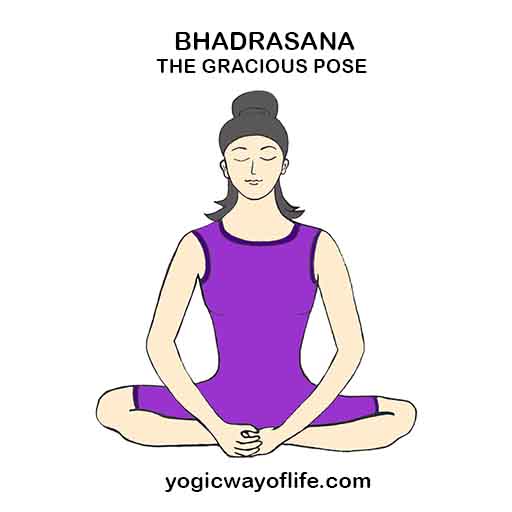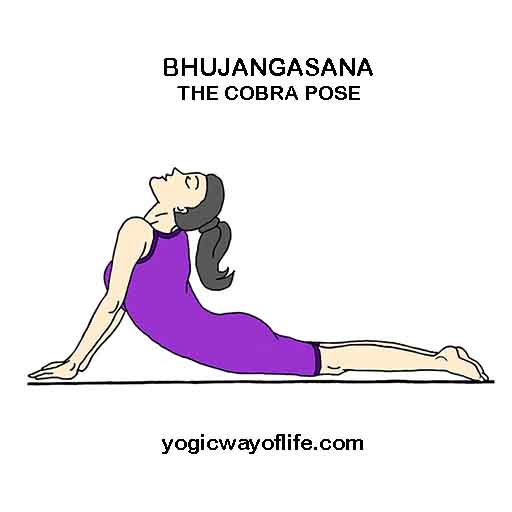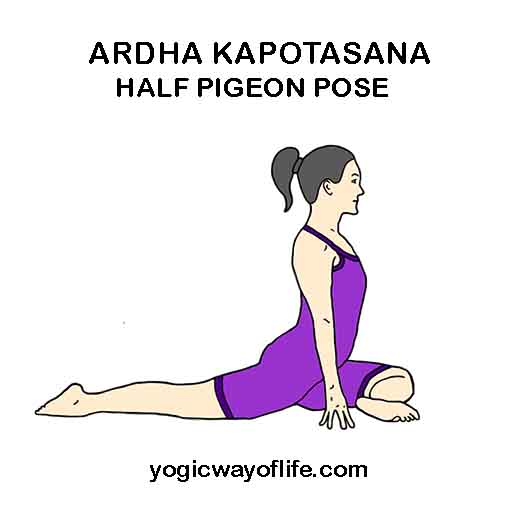Can Yoga improve flexibility? What is flexibility? Is it just the ability to place the palms flat on the floor or doing the standing forward bend? Or, is it the super easy way one can swing himself up to get into shoulder stand? Well, no! There is much more. Being flexible helps us live easier. There are no tense muscles, stiff joints, or that sense of misery which we have to carry with us as we move around.
Given that, what role does yoga play in restoring our flexibility? Yoga Postures give you a nice stretch, which release the tension and stress that a person stores in this muscles and tissues. And, yes, it makes the person more mobile and flexible. But are these effects long lasting? Well, no!
In order to restore our normal state of flexibility, we should learn to optimize the basic yoga principle of body-mind connection. While doing the asanas, we should try not to force our body into that perfect shape. It is not about perfection; it is about passion. It is about loving ourselves and living in the present moment.
That was the psychological point of view. Now from a physical point of view, we can practice a couple of simple stretches to open up the hips, hamstrings, and lower back – three major areas where our bodies tend to store tension and stiffness. But before getting there, why don’t we look at some of the physical triggers of inflexibility?
Why Are We Not Flexible?
You are just 22, but feel like a 70 year old. Why is that? While aging does impact our flexibility levels, there are some other triggers also.
- Sitting in front of the computer for long hours
- Standing and working without breaks
- Being obese or overweight
- Genetics
- Diet
- Lack of adequate exercise
- Hormonal variations
- Pregnancy
- Medical conditions such as arthritis or ankylosing spondylitis or fibromyalgia
But, it is time for the change. Regular practice of yoga improves the circulation levels, easing the pain and inflammation, which are byproducts of inflexibility. You can also save yourself from the risk of injuries.
Our physiological inflexibility teaches us more flexible with ourselves. It teaches us to embrace ourselves lovingly without judging our negatives and praising our positives. It teaches use to accept wherever we are, every moment, every day, and always learn, grow, and remain perfectly imperfect.
Here are a few pointers before we get started with a couple of stretches that helps in easing physical inflexibility.
- Stretch only till your body allows. Do not overdo. Overstretching could invite injuries.
- It is okay to be imperfect. You do not have to do the pose perfectly. Do only till you are not hurting yourself.
- Stop when in pain. Yoga teaches us to listen to our body. While a subtle pain is acceptable while stretching, stop immediately if you feel any sharp pain or other discomfort while practicing.
- Establish a routine. Try to practice the stretches on empty stomach to reap the most out of each of the poses. If you are practicing in the evening or after a meal, wait for at least 3 hours.
- Stick to the practice. Practice regularly, but do not set a long term goal. Just practice without any expectations and you will soon start noticing the differences in a few weeks.
The journey is a long, never-ending one, but remember that the path is exceptionally rewarding.
Improve Flexibility with Yoga Poses
There are various yogic poses which improve flexibility. We will discuss a few here.
It is more commonly known as Baddha Konasana or the Bound Angle Pose. It relieves the stiffness of knees, hips and ankle joints. It improves the elasticity and suppleness of your inner thighs and hips. When practiced without bending forward, which is a very popular variation of this posture, it helps to ease pain experienced due to sciatica. It is good for developing flexibility of the legs.

Sit down with the spine erect, leg stretched out in front. Fold the knees and join the soles of the feet. Hold the toes with the hands and pull the legs towards the perineum. Keeping the spine and shoulders straight, relax the trunk. Close the eyes and relax, breathing deeply and feeling the stretch in the hips and inner thighs, and hold the posture for 5 to 7 minutes.
A backbend, flexibility enhancer, and digestion booster, this posture helps to look into your mind and re-establish the lost body-mind connection. It is therapeutic for sciatica and helps to stretch your spine and back muscles, making them more agile and supple.

Lie down on the abdomen, legs stretched backward. Rest the palms on either sides of the chest. Let the forehead rest on the mat. Inhale, push into the palms and front of the feet, and lift the forehead, chest, and torso, until the navel, off the floor. Activate the thigh muscles, squeeze the buttocks, and pull the navel towards the spine. Tilt the head backward and fix the gaze up. Roll down the shoulders away from the ears. Hold the posture for 5 to 7 minutes, breathing into your abdomen.
-
Pawan Muktasana Series
There are series of simple exercises classified as Pawan Muktasana. Pawan muktasana literally means relieving the air from the body. Stiffness of the joints, especially with age, is caused by Vata Dosha as per Ayurveda. It is a series of exercises tailored for creating flexibility of all the joints in the body. In this exercise, the practitioner starts from the toe and exercises all the degrees of freedom of each joint in the body up to the neck. Hence the toes, the ankle, knees, hips, the ankle, the elbows, the shoulders and the neck joints are all exercised one by one, by doing simple movements and rotations. The whole process can take 5 – 10 minutes and the joints in the entire body is massaged.
-
Eka Pada Kapotasana – The One Legged Pigeon Pose
This pose looks like a pigeon from the side, when performed. It opens up the hip joints and helps to relieve sciatica. To do this asana, start with the cat pose or Marjariasana.

Then stretch the right leg fully backwards. Bend the left knee and place the ankles near the right groins. Place the two hands in front with palms resting on the ground. Arch your back and neck and look straight ahead. This asana develops flexibility of the hip joints and is useful for those serious practitioners who love sitting in Padmasana for meditation..
-
Maintaining Awareness with Yogic Breathing
One thing that we all tend to ignore is our posture during work and leisure. Wrong postures create stress in the muscles which in a long run creates stiffness and chronic cases of back & neck pain. Maintain awareness of your posture during the day, no matter what you are doing. This will prevent wrong postures. A great help in maintaining this awareness is to practice simple yogic breathing which can be done when you are sitting, standing or even when engaged in light activities. Yogic breathing involves taking slow and deep breaths with awareness. With this awareness you will become alert about any stress in the body and will learn to adjust the posture to relieve it. The mind has to be programmed to do this effortlessly and continuously. With this, you will become aware of the root causes of your stiffness and pain and overcome it over a period of time.
Apart from these, there are many postures like Uttanasana, Padangushtasana, Utthita padangusthasana, and Supta padangusthasana that help with hamstring mobility. All yogic back bend and forward bending poses are beneficial to improve the overall physiological flexibility.
Also of prime importance, is how a person holds the posture in his mind. When mind opens up and lets go of all anger, prejudices and blocks, one will be become more flexible. Surrender and let go… flexibility will be yours!
